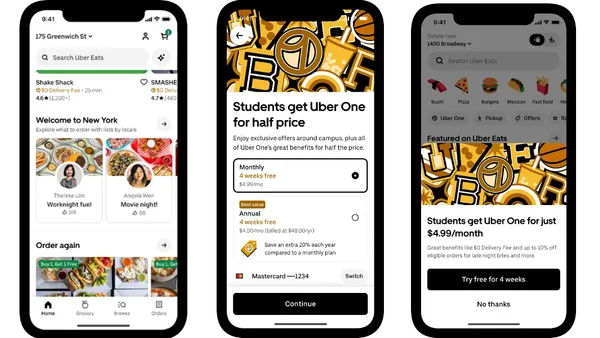Dive Brief:
- Due in part to the tightest labor market in 50 years, seniors are filling jobs typically taken by young, entry-level workers, according to Bloomberg, and restaurants have bought into the trend. McDonald's, Bob Evans and Honey Baked Ham Co. have targeted job listings at older workers through AARP, senior centers and churches.
- As Americans live longer, they might desire the activity and societal interaction or need the money to boost meager retirement funds, Bloomberg reported. Because older workers don't necessarily desire upward mobility, they can offer restaurants, which struggle with turnover, inexpensive, reliable labor.
- The Bureau of Labor Statistics estimates that from 2014 to 2024, the number of U.S. workers aged 65 to 74 will rise 4.5%, while young workers aged 16 to 24 will drop 1.4%. The 75-and-older range will jump more than 6%.
Dive Insight:
The tight labor market has some economists scratching their heads. Young workers are increasingly opting out of the workforce, especially men aged 16 to 24, who sometimes attend school or, as Bloomberg notes, claim disability. Notably, teenagers accounted for only 16% of fast food jobs after the recession, down from more than 20% in the early 2000s. Their loss though might be retirees' gain.
While older workers generally gravitate toward service and sales jobs, restaurants sit near the bottom of industries where retirees usually land, according to data cited by the New York Times. The New York Times also reported that applicants aged 55 to 64 were half as likely to be hired as a server, for instance, than someone aged 30 to 49. Retail clerks, on the other hand, were twice as likely to be hired. Perhaps the hurdle is the perception of odd and grueling hours on foot working at a restaurant. The digital revolution in quick-service, where employees now take on more customer service-oriented roles, however, might be a draw for seniors.
Regardless, restaurants should take note because the Census Bureau says the U.S. population of 65 and older will surpass the under-18 age group by 2035 and they'll probably need a job. Coined "unretirement," RAND Corporation found that 60% of older workers take "surprisingly physical" jobs, a similar rate reported by mid-career workers. Recruiters and human resource managers also point out that seniors have more established social skills and workplace traits that the current generation, raised online, sometimes lacks. Plus, restaurants can easily deal with part-time schedules and older workers' willingness — and in many cases, preference — to work less than full-time. The average work-week for fast-food workers, age aside, teeters around 25 hours a week.
Nearly 9 million Americans over the age of 65 were working in 2016, up 35% from 2011. They now comprise one-fifth of the workforce, compared to 11% in 1985. Following similar trends, the National Restaurant Association estimated that by 2024, restaurant workers over the age of 65 would jump 5%, while those aged 35 to 44 would rise 3.5














